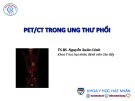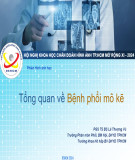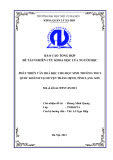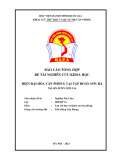
On such a full sea are we now afl oat.
And we must take the current when it serves,
or lose our ventures.
Shakespeare
From Armenia in 1987 to Indonesia in 2004, to New
Orleans in 2005, and now to Haiti in 2010, we have
embarked on a sobering journey in public health logistics.
Previous standards of disaster response crumbled when
tested. New standards are now tested in real situations
rather than in theory [1].
Even in an unforgiving environment, the principles of
the Federal Emergency Management Agency (FEMA) still
apply to the the command structure, albeit in a modifi ed
form [2]. We learned the diffi cult lesson that trauma is
not the major issue following a disaster [3]. Th e tradi-
tional infl ux of ad hoc rescue teams fl ooding into the area
actually hinders progress, as it did after the 9/11 disaster
in New York City [4]. Safety provided support personnel
and security of supply channels have always rivaled the
good intentions of would-be rescue teams [5].
Mass media commentary on disasters tends to soften
the horror of the reality by refl ecting a compassionate
fantasy: the illusion that human altruism conquers all [6].
Th is media apparition also inadvertently reinforces the
similar illusion that all assistance is eff ective assistance.
We share the experience of a well-intentioned medical
group whose involvement puts the usual media coverage
into a realistic perspective.
Surgical and critical care teams may have awareness of
unique supply and transportation issues but they have
little oversight of on-site security, infrastructure,
command, re-supply, or support systems. A motivated,
committed and well-equipped trauma team traveled to
Haiti several days after the earthquake for the purpose of
medical assistance. Th eir destination was a designated
hospital to establish comprehensive emergent surgical
intervention for orthopedic injuries.
Th e multidisciplinary team of surgeons and support
personnel departed with an extensive medication list and
comprehensive equipment, including a functioning
portable operating room and postoperative recovery area
(D Lorich, personal communication). Th ey planned to
quickly replenish expended equipment by private jet
through their corporate connections.
On arrival, the team found that the expected ground
support from Partners in Health was nonexistent. Th eir
fl ight logistics were either delayed or cancelled. On
ultimate arrival, the designated site did not have func-
tional operating facilities. Among other problems, there
was no running water and only a limited electrical supply.
Th eir backup option was the Community Hospital of
Haiti, which turned out to be more functional but
overloaded with patients. Anesthesia machines were
nonfunctional; other needed materials were in short
supply or inadequate for their needs, and there was only a
ragtag group of voluntary health providers who had made
it there on their own.
Th e team found no one in charge at the site. Th ey had
established the fi rst functional acute care hospital in the
disaster area, yet no one arrived to assess and coordinate
the activities. Th e military could not or would not protect
the resupply of equipment or protect from pilfering.
Th ere was no security for the team, despite promises to
provide it from the New York City Police Department
and the Fire Department, City of New York. Procedures
were begun on a hit or miss basis, quickly generating a
need for replenished supplies. Th e re-supply plane landed
Abstract
The nature of mankind is a concern for those in need.
Disasters, both natural and manmade, have been with
us since the beginning of recorded history but media
coverage of them is a relatively new phenomenon.
When these factors come together, there is great
potential to both identify and serve the sick and
injured. However, the mass media by its nature tends
to enhance the humanistic aspect of rescue while
minimizing the practical problems involved. We
describe a recent scenario in Haiti that puts some of
these complications into a practical perspective.
© 2010 BioMed Central Ltd
Disaster medicine: the caring contradiction
David Crippen
1
*, Charles Krin
2
, Dean Lorich
3
and Ken Mattox
4
COMMENTARY
*Correspondence: crippen+@pitt.edu
1
University of Pittsburgh Medical Center, Department of Critical Care Medicine,
644s Saife Hall, 3550 Terrace Street, Pittsburgh, PA 15261, USA
Full list of author information is available at the end of the article
Crippen et al. Critical Care 2010, 14:133
http://ccforum.com/content/14/2/133
© 2010 BioMed Central Ltd



























